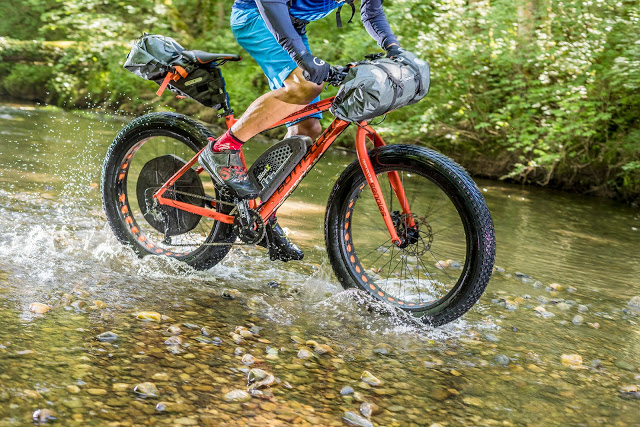However the biggest adjustments have occurred in biking technology. Proceed, ride in additional challenging circumstances and have more fun - www.little-dragon-bikes.eu/de/.
The heart and soul of a fat bicycle is the rims and tires. Fat wheels range in dimensions from roughly 3.7in. 5.2 In., Typically installed on rims with a size of 50-100 mm. The particular resulting array of the fatigue volume is large. Narrower wheels are best for groomed compacted snow riding and racing, visiting desert routes, or light drivers who are required less flotation.
The largest tires, mounted on 100mm rims, are best for soft snow, beach and also desert trips, or bigger riders who need a little more help. Some of the greatest new technologies in fat cycling are aimed at decreasing bike weight and creating fat cycling a little easier.

Tires
Initial select the approximate tire dimension that matches your timetables. If you're not certain which size will work for you and also you're planning on some off-trail experience on mud or snowfall, go bigger. If you mostly plan to drive groomed snow trails and summer time dirt, 4.0in. Tires ought to be fine.
Following, look at the tread pattern. Huge, spacious buttons provide a lot more traction, but roll gradually. Traction and speed frequently work against the other person, so the feeling of security of your high traction force tire can come to the tradeoff in rolling performance. Conversely, super-fast fat bicycle tires are generally useless in solid, fat bike surfaces, but are well suited for driving dust in summer time.
Another important aspect is the case fat and development. Tubeless-enabled tire housings should be employed whenever a tubeless set up is organized. Note: Strengthened tubeless-ready tires are usually strongly recommended in the desert!
Are you planning an off-road experience in the sand or snowfall? Go added fat.
When driving in winter along with minimal likelihood of puncture, light models tend to be preferred to enhance performance with low exhaust pressures.
Tubeless wheel systems have become more common in the winter months as the technologies becomes more dependable. All new bicycles are tubed, in support of a few fat bicycles are sold with tubeless-ready equipment, despite the fact that that is more likely to continue to alternation in the next few years.
Top quality rivet tires are available in 4.0in. and also 4.6in. Measurements from 45NRTH and Terrene - equally brands are suggested.
For winter season trips, specifically for urban individuals, where icy roads as well as loose snow can can be found, a fat-laden bicycle tire is definitely an incomparable tool.
However, these types of tires come at a price beginning at around $ 200 each. Thankfully, when there is ice and snow, minimal deterioration of the rivets as well as rubber buttons can be expected so the tires can be used multiple seasons of the year.
Rims
Select a edge width that meets your meant schedules. The majority of bikes have 80-90mm rims. Smaller rims are usually less valuable in soft weather, but they are more maneuverable when the bike is used as an all-purpose four-wheel drive in the summer. Larger rims are suggested for bigger riders who wish to go back country riding in any kind of season.
Many fat bicycle rims are made of light weight aluminum and have a single-walled or hybrid construction with weight-saving channels in the center of the actual rim. Previously few years, several aluminum wheels such as the SUNringle Mulefut as well as Surly MOBD have brought tubeless designs to the market for striking entry-level motorcycles.
In the upper portion, wide carbon rims save a considerable amount of bodyweight, and when coupled with tubeless tires, extremely light, bold bicycle tires are now feasible, making total bicycles below 20 kilos.
Tubeless technology
That Needs Tubeless Wheels? If your fat bicycle plans contain desert traveling or mountain biking with a splash of backcountry overlanding and bushwacking, tubeless tires are worth this. Most mountain bikers use tubeless bicycles these days to prevent flat tires, improve moving efficiency and lower the overall weight of the tires.
If you plan to ride in the winter when the likelihood of breakdowns is actually minimal, tubeless wheels are not essential, although the increased efficiency remains worth considering.
Whenever driving in winter with small risk of pierce, lightweight versions improve performance with low tire strain.
Top fat bike racers ride ultra-light carbon cycles with tubeless auto tires, but many everyday riders also appreciate the less difficult ride. Up to and including pound inside weight is easy to remove when a fat bicycle is transformed into tubeless, and additional physical efficiencies are gained by removing the pipe.
Deep winter adventures in the hinterland can greatest be dished up with a conventional tube program. Riding in the dark in sub-zero temperatures is a bad time for you to discover that your own cycling method isn't functioning at 2-3 Pounds per square inch.
Pack the pump as well as experiment!
The actual operating pressures are extremely variable with respect to the tire size, driving circumstances and motorist load. Upon many outings, adjusting tire pressure will improve flotation protection, traction and also suspension. Bring a small, huge volume water pump for bikes or fat cycles and find out which pressures is useful for you.